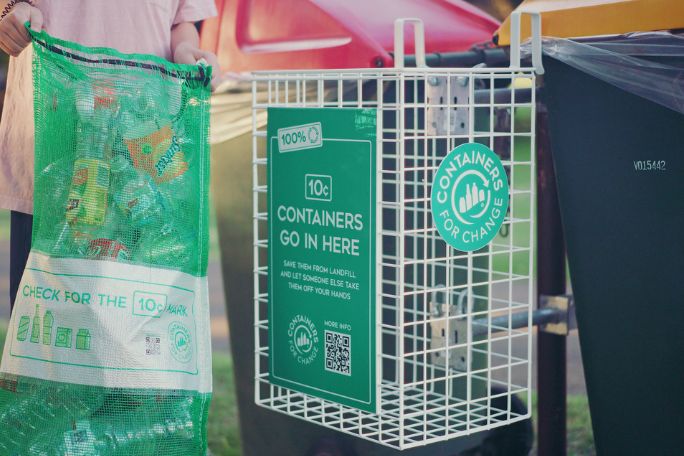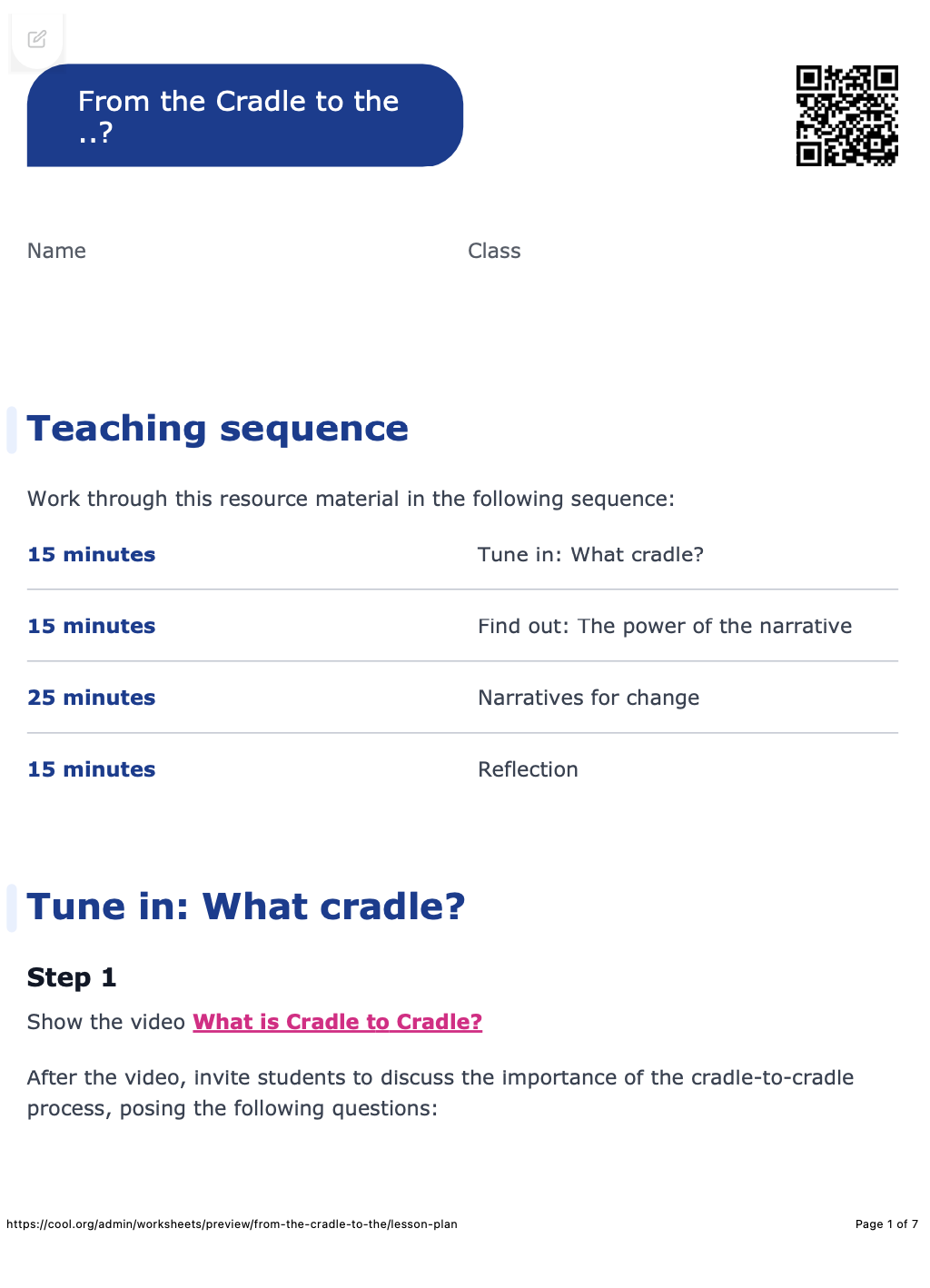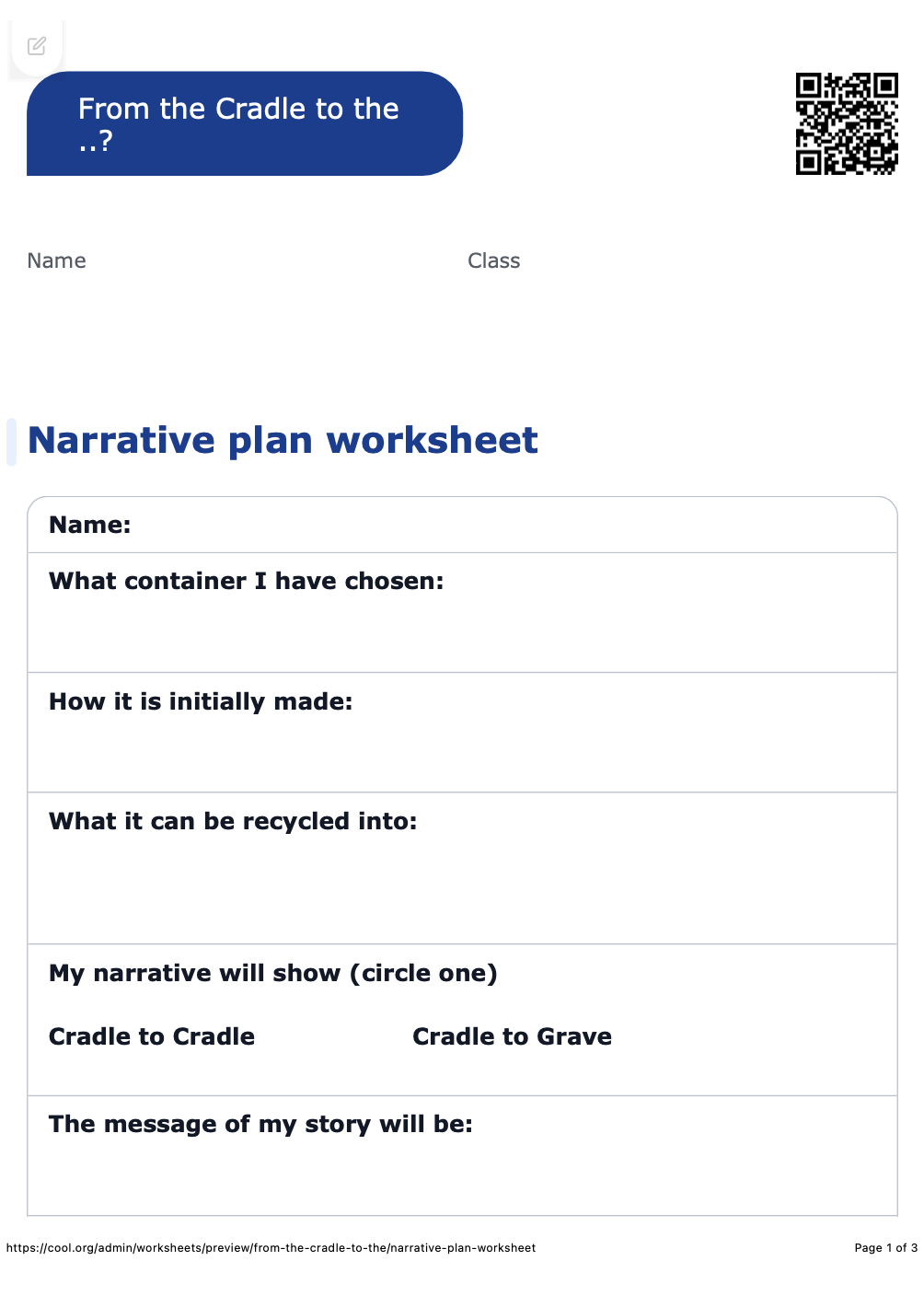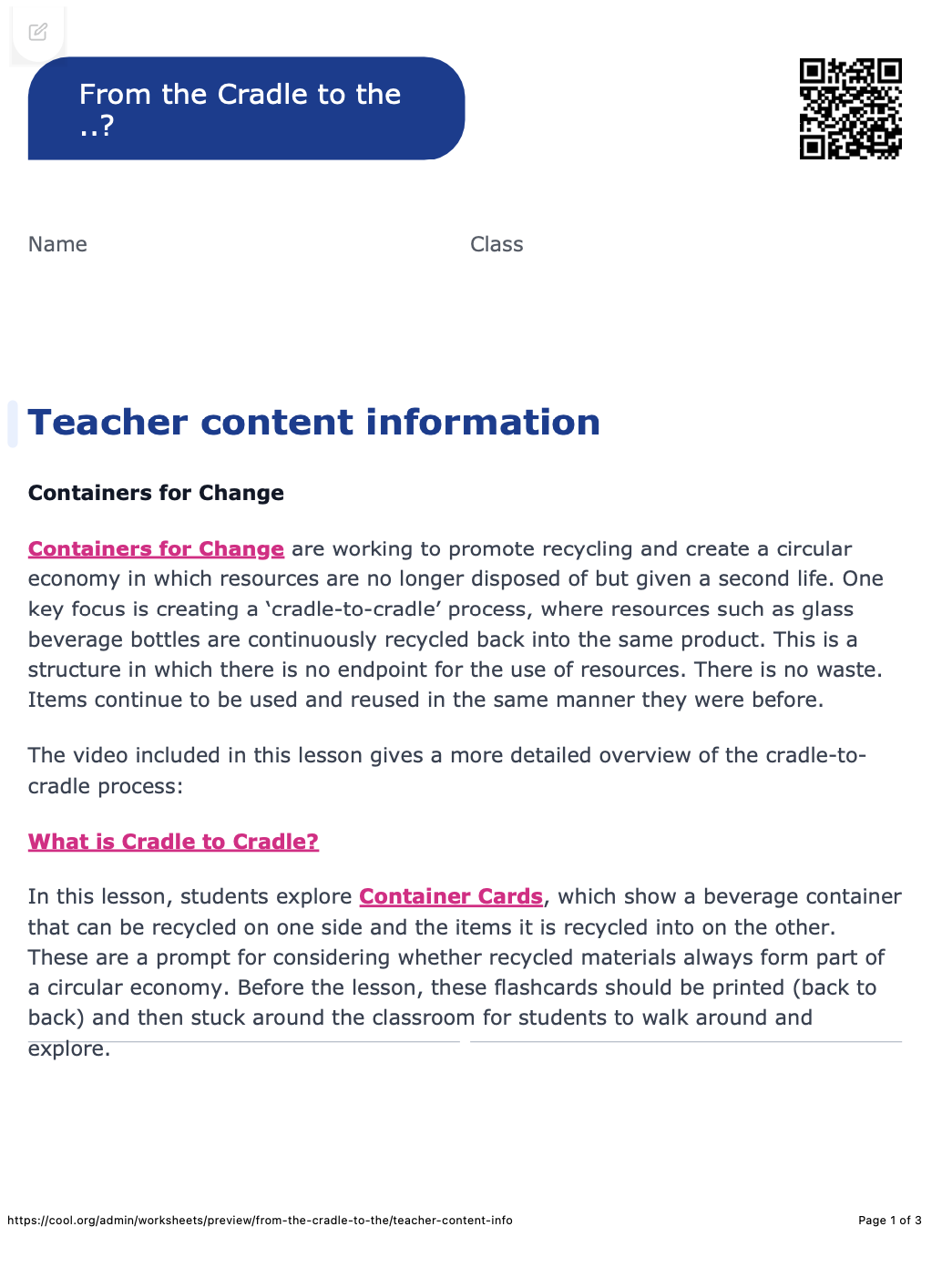Lesson summary
Put yourself in their shoes. It’s a phrase we often say to students to build empathy and in this lesson students will use this technique in a creative narrative to build understanding of the lifecycle of resource and the sustainability impacts of our decisions.
Learning intentions:
Students will...
- write a narrative to create an emotional link between the reader and the environmental issue being discussed.
Success criteria:
Students can...
- plan a narrative with a plot reflecting the life cycle of a beverage container
- use anthropomorphism to connect the reader to the issue
- use a variety of sentence structures, words and phrases to form a descriptive piece of writing
- punctuate their work effectively to be clearly understood by the reader.
Lesson guides and printables
Curriculum links
Select your curriculum from the options below.
Lesson details
Skills
This lesson is designed to build students’ competencies in the following skills:
- creativity
- communication
- community engagement
- empathy
- reflection
Curriculum Mapping
Western Austalian Curriculum - Year 6, English
- Plan, draft and publish imaginative, informative and persuasive texts, choosing and experimenting with text structures, language features, images and digital resources appropriate to purpose and audience (ACELY1714)
Australian Curriculum (v9.0) content descriptions - English
- Students plan, create, edit and publish written and multimodal texts whose purposes may be imaginative, informative and persuasive, using paragraphs, a variety of complex sentences, expanded verb groups, tense, topic-specific and vivid vocabulary, punctuation, spelling and visual features (AC9E6LY06)
General capabilities: Critical and Creative Thinking, Literacy
Cross-curriculum priority: Sustainability
Relevant parts of Year 6 achievement standards: By the end of Year 6, create written and/or multimodal texts, including literary texts, for particular purposes and audiences, developing, explaining and elaborating on relevant ideas from topics or texts. They use text structures and vary paragraphs to organise, develop and link ideas. They use and vary language features including sentence structures, topic-specific vocabulary and literary devices, and/or multimodal features. They spell using phonic, morphemic and grammatical knowledge.
- Plan, draft and publish imaginative, informative and persuasive texts, choosing and experimenting with text structures, language features, images and digital resources appropriate to purpose and audience (ACELY1714)
UN Sustainable Development Goals
UN SDG 12: Ensure sustainable consumption and production patterns
- Target 12.2: By 2030, achieve the sustainable management and efficient use of natural resources
Resources Required
- Container Cards (stuck around the room before the lesson) [Please add these to the resources from the PDF linked].
- Device to display digital resources to the class
- Reference Sheet: Anthropomorphism
- Student devices (iPads, laptops etc.) for additional research
- Student worksheets: Contrasting Cradles and Narrative Plan (one per student)
Additional Info
Level of teacher scaffolding: Medium - some students may require support to develop their ideas





Welcome back!
Don't have an account yet?
Log in with:
Create your free Cool.org account.
Many of our resources are free, with an option to upgrade to Cool+ for premium content.
Already have an account?
Sign up with:
By signing up you accept Cool.org's Terms and Conditions(Opens in new tab) and Privacy Policy(Opens in new tab).